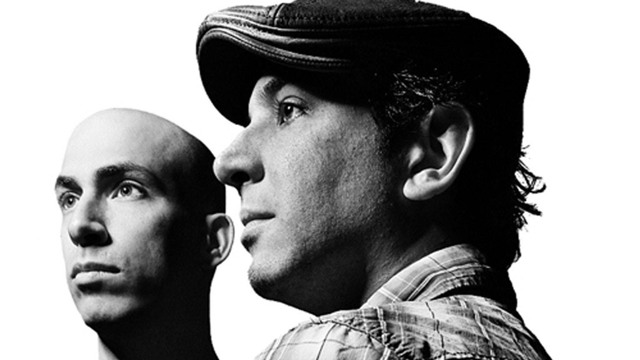The ideal format for dance music (an all too broad umbrella term that collects a variegated universe between disco and edm) is not necessarily the album. The history of dance is made up of singles, ep, remixes, versions extended to 12 “, edits and re-edits, mysterious unlabeled vinyls reserved for DJs, mixtapes and compilations. Rarely of albums. The exceptions that come to mind are legendary records like I remember yesterday by Donna Summer (1977), It’s stylish of the Chic (1978), Club classics vol. one dei Soul II Soul (1989) e Homework by Daft Punk (1997). There are certainly others but these are the ones that came to mind. And then there is Metro Area, the ambitious, overflowing and to date only album by New York producer duo Morgan Geist and Darshan Jesrani.
That of Morgan Geist in particular is an interesting figure and, as often happens in dance, elusive. He debuted in 1997 with an instrumental album entitled The driving memories, dedicated to the memory of his sister who died in a car accident. It was an album of twilight techno and full of lyrical glimpses: it sounded like the soundtrack of a movie I would have liked to see. He then worked using different pseudonyms (Storm Queen the best known) and remixed singles for Rapture, Telex, Franz Ferdinand and for my favorites, the Canadian Junior Boys, with whose singer Jeremy Greenspan, in 2008 he released an album that I highly recommend to listen, Double night time. The backbone of Morgan Geist’s music comes from classic Chicago house and Detroit techno, but his real strength is to transcend genres, to grasp their essential characteristics and mix them up to create something unique.
The work he does with Darshan Jesrani in Metro Area it is precisely this but by widening the gaze on dance music to 360 degrees: no longer strictly house or techno but also disco, boogie, house, funk and jazz fusion are dissected into their essential particles and reassembled to create a whole new machine. Metro Area work like geneticists, hybridizing and triggering DNA strands of forty years of dancing music, creating something new and shiny, which sounds familiar not because it is nostalgic or retro but because it touches deep chords: those of rhythms, of the sequences and grooves that make us move. Metro Area is one of those albums that go directly to the reptilian brain of anyone who has attended a club, dance hall or disco at least once in their life.
Morgan Geist is, of course, a dance nerd, a serial accumulator of the most esoteric, obscure and forgotten vinyls: he is one of the few Americans to have a cult for Gaznevada Italians and an encyclopedic knowledge of Italo disco. And this culture of his atomized into billions of fragments is all poured into Metro Area and becomes its connective tissue. “I never buy new records,” Geist said in a 2004 interview with Stylus magazine. “What I liked about the original house and techno was that it was born from second-hand machines, resold by the big recording studios that no longer used them because they were obsolete or half-broken. Now it has become a kind of standard ”.
Let’s listen to the piece that opens the album: Dance reaction. The elements of the most classic disco music are all in place and overlap each other with elegance: a tight rhythm, a funky bass, a guitar riff and string embellishments arranged by Kelley Polar, another leading exponent of the New York dance scene. It’s all very classic, but at the same time this music seems to be born in a pneumatic void: all the ingredients of the piece seem abstract signs, graphic elements cut out on a white background. It is the skeleton of disco music, pure engineering… yet its appeal is irresistible. It is the sound of an archetype, the reflection of the Platonic idea of disco music.
Each subsequent piece is organized in a similar way: straight kick, a theme that starts and infinite variations, loops, tweens, handclaps, snare drums, hi-hats: all the arsenal of dance music effects, even the most poor. Indeed, especially the poorer ones, those that in Morgan Geist’s poetic vision refer to the poor and geek origins of the house. However, refinements are not lacking: solos not sampled and played for the occasion, including guitar, percussion, winds and an extraordinary flute in Machine vibes.
The pieces are all instrumental and all basically disco but, as Darshan Jesrani, the other half of Metro Area said, “the arrangements and mixes are entirely inspired by house and techno, so in the end we ended up with some disco pieces. minimal, as if emptied “. The effect that this album makes when listened to in its entirety, why Metro Area it is an album and must be listened to as such, it is that of a beautiful building of which you can see, as in a cross section, the foundations, the pipes, the electrical and disposal systems and the cavities. Metro Area has been described as a classic nu-disk. I would rather define them as a meta-disco work: music for dancing made up of billions of fragments of other music for dancing.
Metro Area
Metro Area
Source, 2002
.
